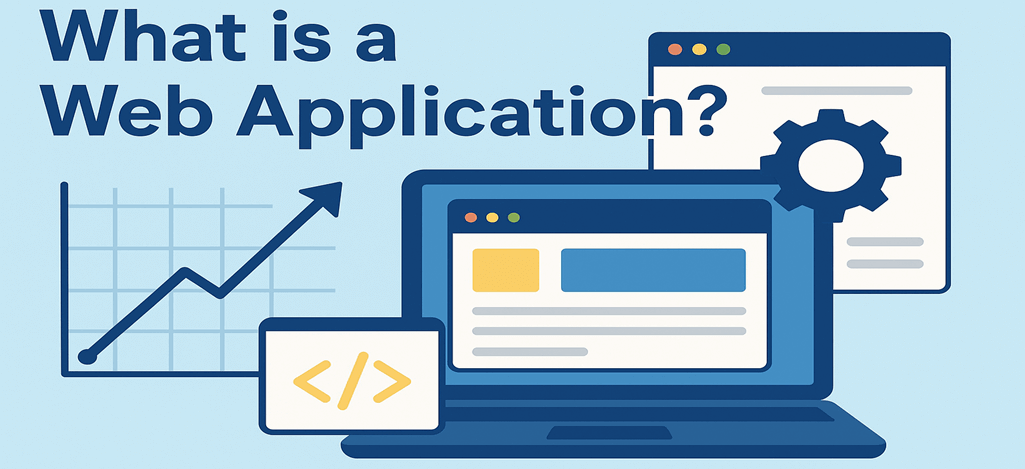What is a Web Application?
Have you ever used Google Docs or listened to music on Spotify without downloading anything? That’s a web application.
It’s software you access through a browser. No installation, no hassle. Unlike desktop apps, web apps run online using technologies like HTML, CSS, JavaScript, and server-side languages such as PHP or Node.js.
The real benefit? They work anytime, anywhere, and on any device. From writing an article to shopping online, web apps power most digital experiences today.
For businesses, understanding different types of web apps is key to choosing the right solution.
Why Web Applications Matter for Businesses
Web applications provide scalability, flexibility, and convenience. They don’t require downloads and can be accessed from any internet-enabled device.
With custom web application development, businesses can design tailored solutions that match their specific needs. These apps help streamline operations, improve customer experiences, and support growth.
Some web app benefits for businesses include:
- Easy accessibility for customers
- Faster updates and upgrades
- Cost savings on infrastructure
- Enhanced customer engagement
Types of Web Applications
Static Web Applications
Static apps display fixed content. They are built with HTML, CSS, and JavaScript. Portfolio websites are a good example.
They are easy to develop and load quickly. However, they lack dynamic content or real-time updates, making them less suitable for interactive use.
Dynamic Web Applications
Dynamic apps respond to user actions and display real-time data. Online banking platforms are a common example.
These apps rely on server-side languages like PHP, ASP.NET, or Python. They offer powerful web app features and functionality but require advanced hosting and coding.
For businesses, they provide personalized user experiences, making them ideal for e-commerce, social media, and service platforms.
Single-Page Applications (SPAs)
SPAs load once and update content dynamically without refreshing the entire page. They use frameworks like React, Angular, or Vue.js.
The result? Faster, smoother interactions. They feel more like desktop apps and are perfect for platforms that handle lots of data, such as booking systems or social networks.
Multi-Page Applications (MPAs)
MPAs consist of multiple web pages that reload when users navigate between them.
They may feel slower than SPAs but handle large websites effectively. Platforms like Amazon rely on this structure because it supports big databases and varied content.
Businesses that need complex websites with different functions—like e-commerce or news sites—benefit most from MPAs.
Progressive Web Applications (PWAs)
PWAs combine the best of web and mobile apps. They work offline, load fast, and can be installed directly on devices without an app store.
With built-in web application security, HTTPS, and automatic updates, PWAs improve user trust and experience. Twitter Lite is a famous example.
For businesses, PWAs reduce bounce rates and increase sales, especially for mobile shoppers.
Content Management Systems (CMS)
A CMS helps businesses manage website content easily. Platforms like WordPress allow even non-technical users to create, edit, and publish content.
This makes it simpler for companies to keep websites updated, improve SEO, and engage audiences regularly.
E-commerce Web Applications
These apps power online shopping. They allow businesses to showcase products, process payments securely, and provide smooth navigation.
Platforms like Shopify and WooCommerce are popular examples. They offer ready-made solutions, while custom web application development can create unique features for specific business needs.
For companies, e-commerce apps open the door to global customers and 24/7 sales.
SaaS Applications
SaaS applications (Software as a Service) are cloud-based apps that users can access on subscription. Examples include project management tools and CRMs.
They reduce setup costs, offer scalability, and provide regular updates automatically. Businesses use SaaS apps to improve collaboration, manage operations, and reduce IT expenses.
Portal Web Applications
Portal apps act as gateways, offering access to different services or information through one platform. Examples include university portals or employee dashboards.
They are ideal for businesses that need to provide personalized access to different groups of users.
Animated Web Applications
These apps use animations to create interactive and visually engaging experiences. They are built with tools like HTML5, CSS3, and WebGL.
Businesses in entertainment, gaming, or creative industries often use animated apps to attract users and increase engagement.
Final Thoughts
From static websites to advanced SaaS applications, each web app type offers unique opportunities for businesses.
Choosing the right type depends on your goals—whether you want a simple website, a professional web application with advanced features, or an e-commerce platform like Shopify.
By investing in the right solution, businesses can improve customer experiences, strengthen web application security, and achieve long-term growth in the digital world.








